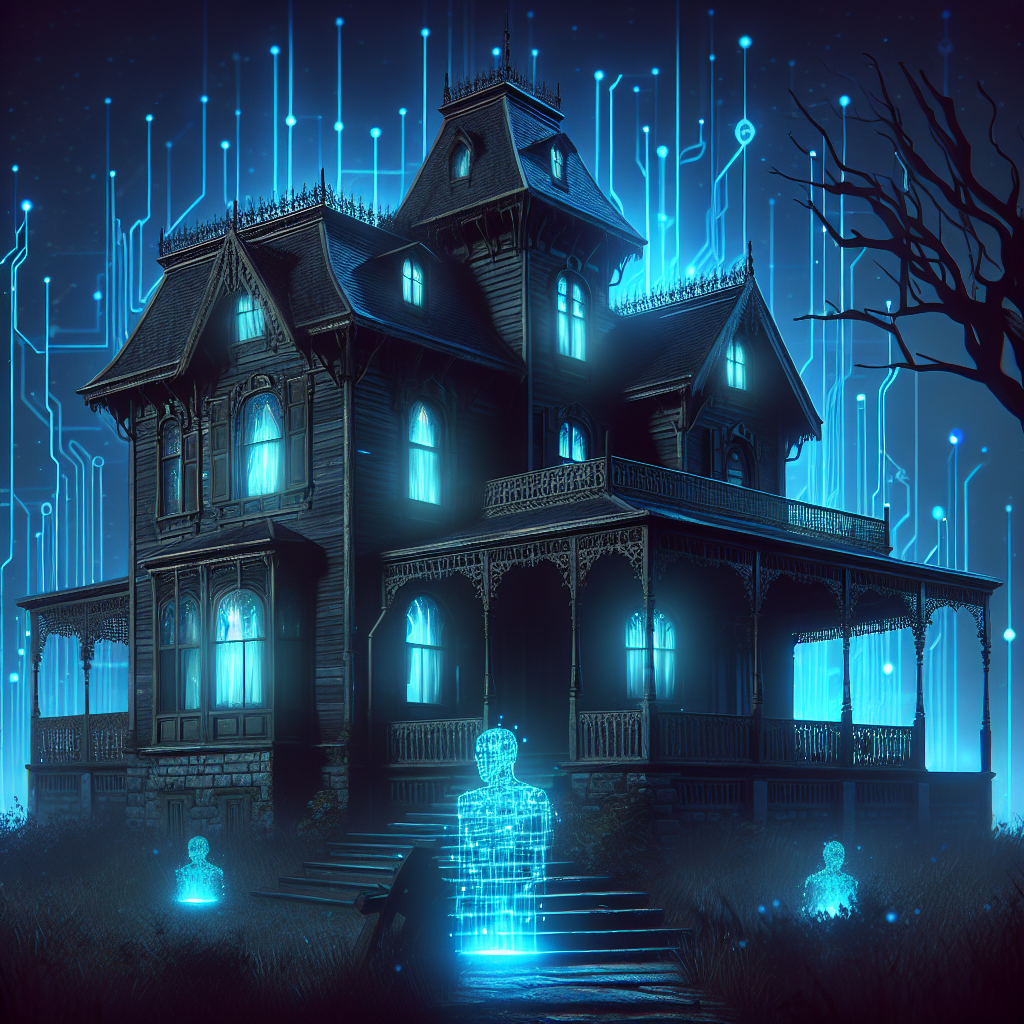Haunted houses have long been a popular form of entertainment, offering thrill-seekers a chance to experience fear and excitement in a controlled environment. But as technology continues to advance, some haunted houses are taking things to the next level by incorporating artificial intelligence (AI) to create even more terrifying experiences for their visitors.
AI in haunted houses can be used in a variety of ways to enhance the scare factor. From interactive characters that respond to guests in real-time to personalized experiences tailored to each individual, AI is revolutionizing the way we experience fear.
One of the most common uses of AI in haunted houses is through interactive characters. These characters are powered by AI algorithms that allow them to respond to guests in real-time, creating a more immersive and personalized experience. For example, a haunted house might have a ghostly figure that can sense when a guest is particularly scared and adjust its behavior accordingly to heighten the fear factor.
Another way AI is being used in haunted houses is through personalized experiences. By collecting data on each guest, such as their fears, phobias, and past experiences, AI algorithms can create a custom scare experience tailored to each individual. This allows haunted houses to provide a more intense and personalized experience that is sure to leave a lasting impression on visitors.
But how exactly does AI work in haunted houses? AI algorithms are used to analyze data collected from guests, such as their movements, reactions, and biometric data, to determine how to best scare them. This data is used to adjust the behavior of the interactive characters and create a more immersive and personalized experience for each guest.
In addition to creating more intense and personalized scares, AI in haunted houses can also help improve safety and security. By using AI-powered cameras and sensors, haunted houses can monitor the behavior of guests in real-time and ensure that everyone is safe and following the rules. This can help prevent accidents and ensure that guests have a fun and enjoyable experience.
But while AI in haunted houses can create some truly terrifying experiences, it also raises some ethical questions. For example, how much data should haunted houses be allowed to collect on their guests? And what measures should be put in place to protect this data and ensure guest privacy? These are important questions that haunted house operators must consider as they incorporate AI into their attractions.
Overall, AI in haunted houses is revolutionizing the way we experience fear and excitement. By using interactive characters, personalized experiences, and advanced technology, haunted houses are able to create more intense and immersive scares that are sure to thrill and terrify visitors.
FAQs:
Q: Is AI in haunted houses safe?
A: Yes, AI in haunted houses is safe when used responsibly. Operators must ensure that the technology is properly monitored and that guest safety is a top priority.
Q: How does AI create personalized scare experiences?
A: AI algorithms analyze data collected from guests to create custom scare experiences tailored to each individual’s fears, phobias, and past experiences.
Q: Can guests opt out of having their data collected?
A: Yes, guests should have the option to opt out of having their data collected by haunted houses using AI technology.
Q: Are there any regulations in place for AI in haunted houses?
A: While there are currently no specific regulations for AI in haunted houses, operators must comply with existing data privacy laws and ensure that guest safety is a top priority.
Q: Will AI replace human actors in haunted houses?
A: While AI can enhance the scare factor in haunted houses, human actors will likely always play a role in creating a truly immersive and terrifying experience for guests.

